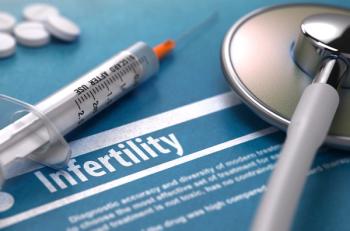
Intensive BP treatment may harm people with diabetes, low BP levels
The effects of blood pressure treatment in people with type 2 diabetes may depend on the blood pressure level prior to treatment.
Blood pressure medications helped to reduce the risk of death in people with type 2 diabetes and a systolic blood pressure of greater than 140 mm Hg, according to the results of a new meta-analysis published in BMJ. However, the same study also showed that the use of these antihypertensive medications in people with diabetes and a systolic blood pressure of less than 140 mm Hg increased the risk for cardiovascular-related death.
“People with diabetes and high blood pressure should receive blood pressure lowering treatment to achieve a systolic blood pressure below 140 mm Hg,” researcher Mattias Brunström, of Sweden’s Umeå University’s Department of Public Health and Clinical Medicine, , told Medical Economics. “However, adding additional agents to patients already below 140 mm Hg could cause more harm than good.”
According to Brunström, it is estimated that between 200 million and 300 million people worldwide have diabetes and many of these people have concomitant hypertension.
“One of the most important interventions to reduce the risk of premature death and cardiovascular disease is treating high blood pressure in people with diabetes,” Brunström said. “However, the blood pressure treatment goal has not been agreed upon, and differs between different guidelines.”
In order to assess the effects of blood pressure treatment at different blood pressure levels Brunström and colleagues conducted a review and meta-analysis of randomized controlled trials that included at least 100 people with type 2 diabetes who were treated for at least 1 year and compared any antihypertensive agents against placebo, two agents against one, or compared different blood pressure targets.
Their search produced 49 trials for inclusion, covering more than 73,000 participants, with the majority having type 2 diabetes. Participants who had a baseline systolic blood pressure of 150 mm Hg or greater had significant reductions in the risk for dying from any cause (relative risk [RR]=0.89; 95% CI, 0.80-0.99) and cardiovascular mortality (RR=0.75; 95% CI, 0.57-0.99) when given antihypertensive treatment. Reductions in cardiovascular risk including a lower risk for myocardial infarction (RR=0.74; 95% CI, 0.63-0.87) and stroke (RR=0.77; 95% CI, 0.65-0.91).
“Our main finding is that people with diabetes and a systolic blood pressure below 140 mm Hg have an increased risk of dying from cardiovascular causes if they receive additional blood pressure lowering treatment compared to those who receive placebo,” Brunström said.
The data revealed that anti-hypertensive treatment in those participants with a baseline systolic blood pressure less than 140 mm Hg resulted in an increased risk for cardiovascular mortality (RR=1.15; 95% CI, 1.00-1.32). A small but not statistically significant increased risk in all-cause mortality was also seen in these participants (RR=1.05; 95% CI, 0.95-1.16).
In a press release affiliated with the study, Brunström pointed out that many treatment guidelines incorporating blood pressure levels will be revised in the next few years. Given these results, which showed the potential risk for recommending blood pressure levels as low as 140 mm Hg, he hoped that aggressive blood pressure management pushing levels for people with diabetes as low as 130 mm Hg might be reconsidered.
Newsletter
Stay informed and empowered with Medical Economics enewsletter, delivering expert insights, financial strategies, practice management tips and technology trends — tailored for today’s physicians.














